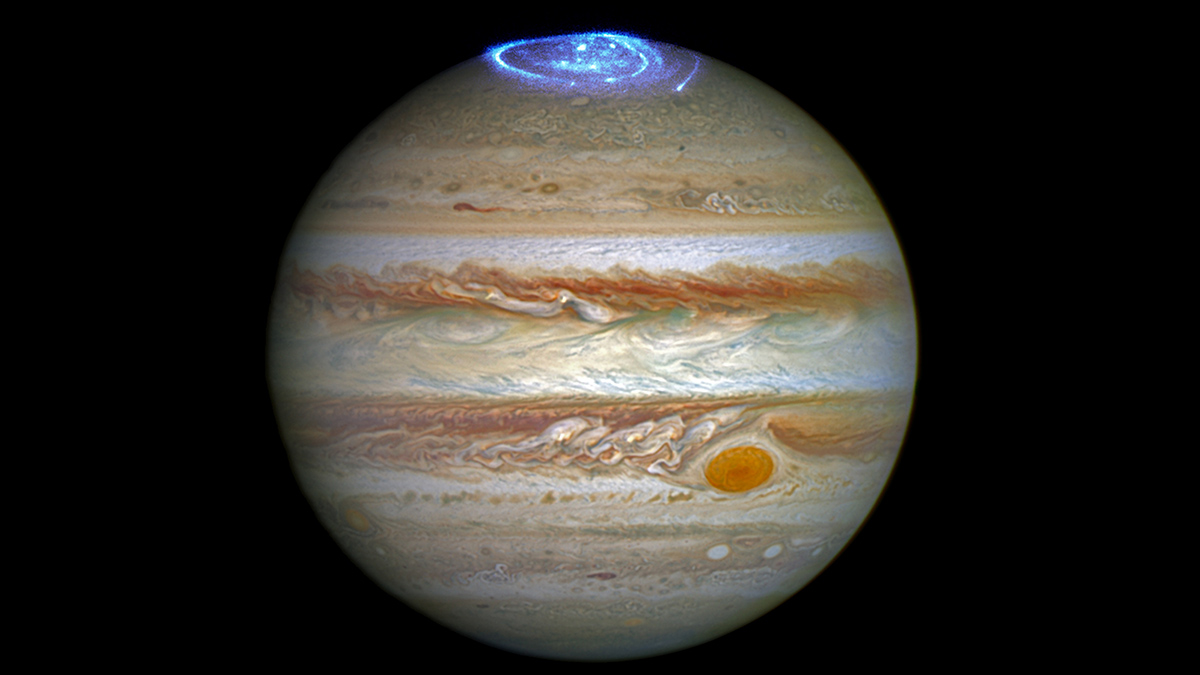Computer simulations and data from NASA’s Juno mission reveal information about the relationship between solar wind and Jupiter’s massive magnetosphere.
Jupiter
Gas Giants with Fuzzy Cores
New measurements of Jupiter and Saturn show that both planets have dense cores that are gradational (fuzzy) and large, rather than small and compact.
科学家研究木卫二的热量如何通过海洋向上传递
木星的卫星木卫二可能是太阳系中最有希望寻找到生命的地方之一。一项新的研究探讨了热量是如何从木卫二的地幔通过海洋转移到其冰壳中的。
Scientists Investigate How Heat Rises Through Europa’s Ocean
A new study examines how heat may be transferred from the mantle, through the ocean, and into the icy crust of one of Jupiter’s moons—perhaps among the most promising places in our solar system to search for life.
A Wider and Deeper View of Jupiter’s Jets
The mid-latitude jets on Jupiter are driven by turbulence that arises, in part, from deep cells, consistent with Juno microwave and gravity observations.
Rotation of Europa’s Icy Shell Driven by Deep Ocean Currents
A model using currents in the deep ocean to drive rotation of Europa’s ice shell from below can explain why its surface may drift despite being tidally locked.
Callisto’s H Corona: Offspring of the Surface or the Atmosphere?
The mostly unknown Callisto’s H corona is created by a global tenuous H2 atmosphere and not by surface water as previously believed, providing the first evidence for H2 in Callisto’s atmosphere.
Europa’s Plate Tectonic Activity Is Unlike Earth’s
The moon of Jupiter has likely experienced intermittent, regional plate tectonic activity in the past, although the plates are currently dormant.
Could Jupiter’s Heat Waves Help Solve a Planetary Energy Crisis?
Infrared observations reveal that Jupiter’s upper atmosphere is much warmer than models predict. The discovery may be a clue to finding missing heat sources in other giant planets.
Impact Crater off the African Coast May Be Linked to Chicxulub
The underwater crater, spotted serendipitously in commercial observations of seafloor sediments, is believed to have formed at roughly the same time as the famous Cretaceous-Paleogene impact event.










